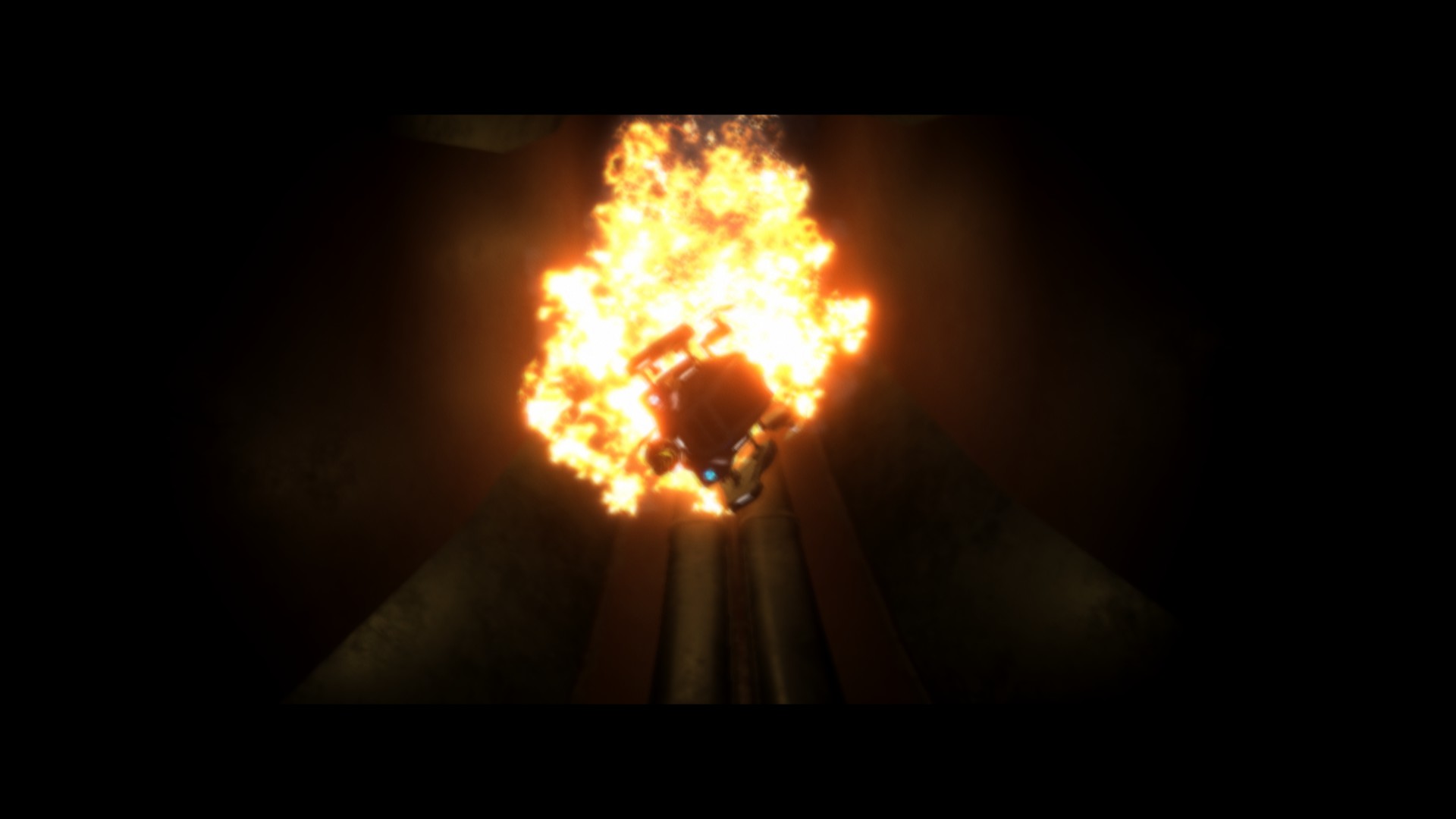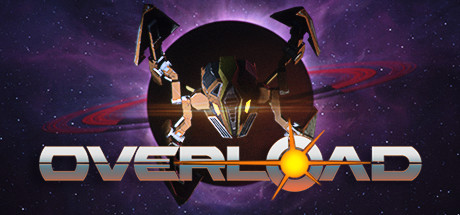It’d probably have been difficult to program this game amongst the openness of space, but the level design is a significant limitation on what could have been possible otherwise.
Type: Single-Player
Genres: FPS
Developer: Revival Productions
Publisher: Revival Productions
Release Date: 31 May, 2018


First Impressions
Not since Star Fox 64 way back in 1997 have I played many SHMUPs where you don’t just look at a small ship from overhead, as the notion of piloting a ship in a 3-dimensional manner doesn’t seem to arise very often. The only exceptions I’m generally aware of come from jet fighter sims. Regardless, looking at Overload (OL), I was excited for the opportunity to play such a game again, though the camera angles shown in the trailers were of some concern to me as I found it somewhat hard to see what was going on. With such positive reviews overall though, I was all too happy to take a key from someone who didn’t need it, so I could give it a shot.
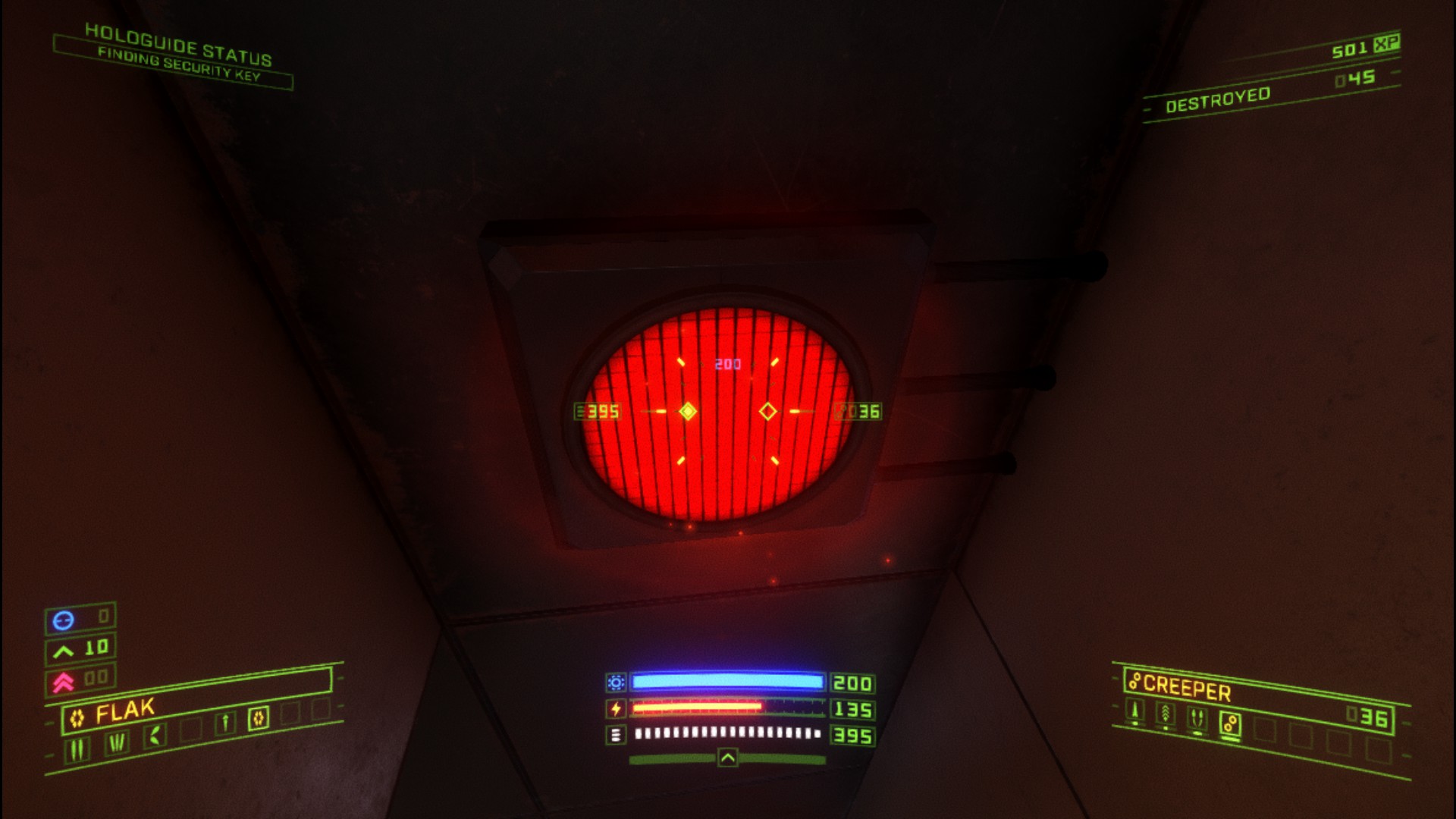
Gameplay
As already mentioned, this is a first-person perspective SHMUP style game, and true to form you face off against an enemy count that greatly outnumbers you. The action is broken up into individual stages, though your progress carries over from stage to stage, including your ammo and energy reserves. At least, I think so, due to the otherwise arbitrary amounts of items you start a stage with, since you don’t start off maxed out. Additionally, you’re able to upgrade various stats of your ship, such as the power of your weapon systems, speed of the ship, durability, etc. Doing so requires you to find upgrades scattered about each stage, in contrast to gaining XP by killing bad guys. There are also secrets tucked away, some of which require some careful navigation to find.
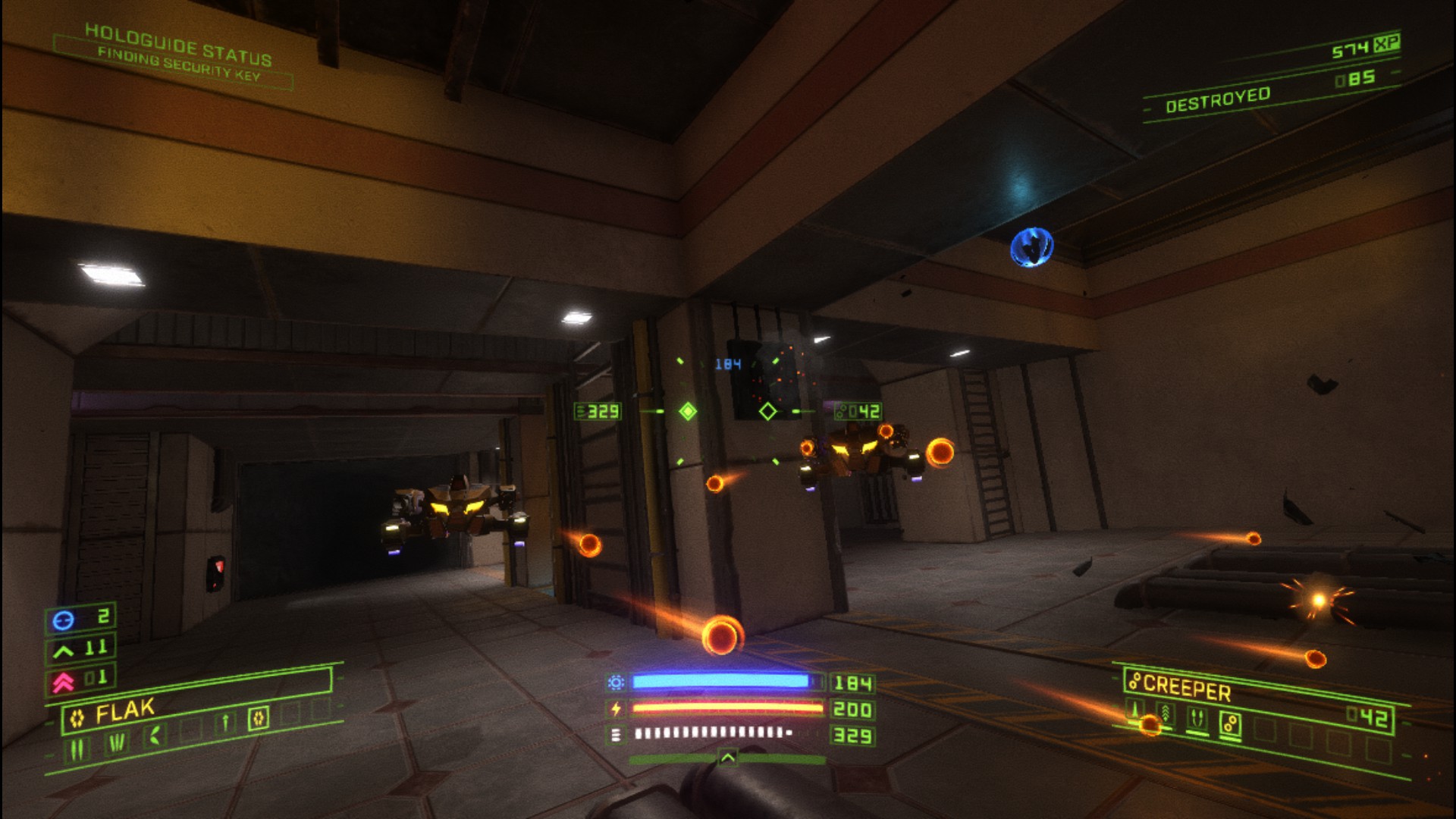
Although the secrets are useful, there are progressing objectives to complete in each stage. These essentially involve finding keycards to access secured areas, before blowing something of importance to pieces, such as a reactor or boss. Completing the last objective triggers a short count-down before the entire station you’re at self-destructs. If you don’t escape in time and haven’t manually saved during the stage, you would have to start at the very beginning again. You’re also able to rescue hibernating people before the base explodes, but more often than not, I can’t find where they are and let them die. I chalk a lot of that up to the difficulty in navigating the environments, as they all blend together to me and I lose sense of where I’ve already explored and haven’t yet been to.
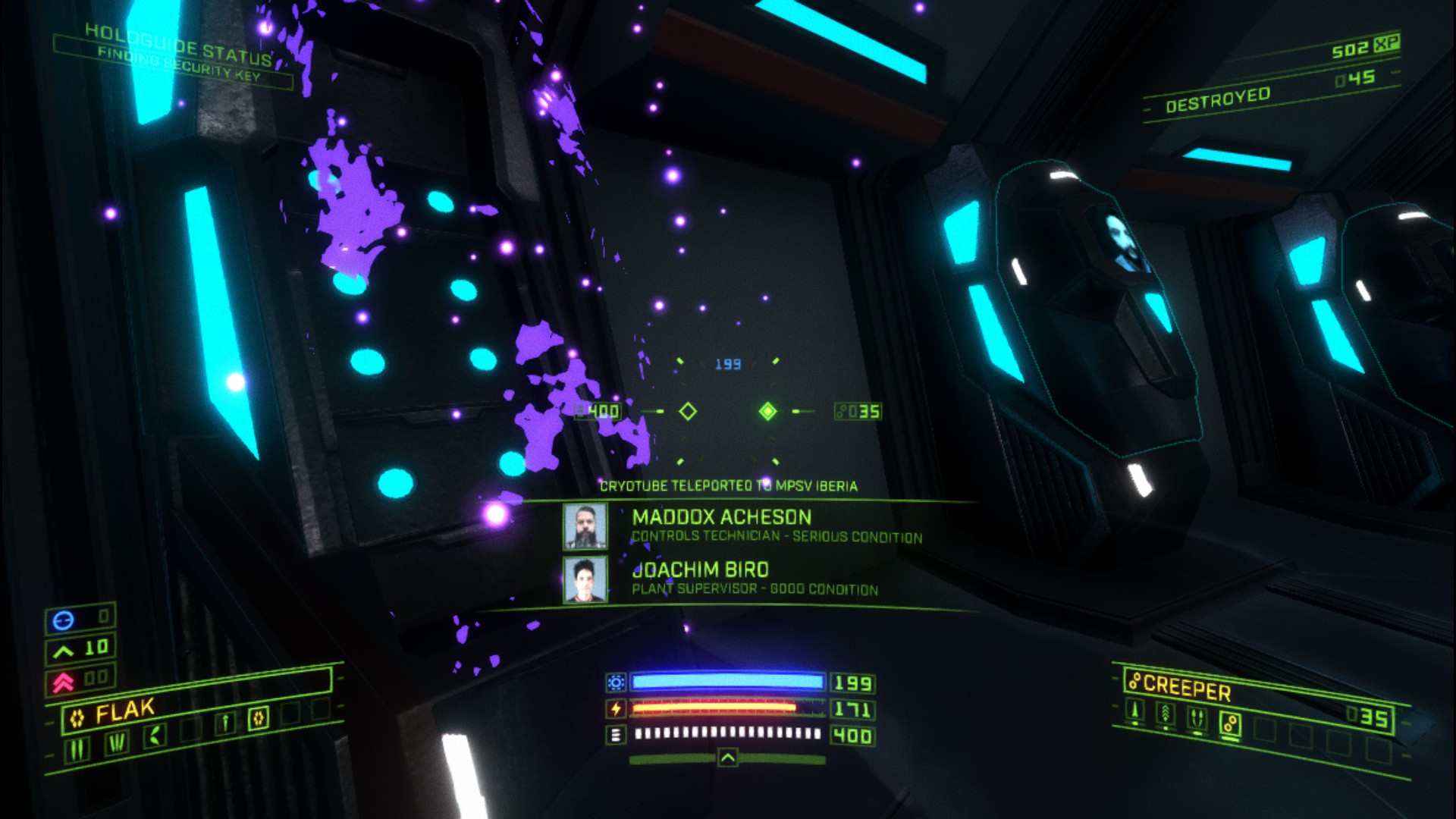
Controls
Flying a spaceship is surprisingly complicated, but that’s because of how much control you have over it. As expected, the ‘L’ and ‘R joysticks’ are used to steer and move the spaceship, but if you want to adjust your height this way, it requires you to angle into that trajectory. Hitting ‘X’ rotates the ship 90 degrees, which is helpful for reorienting yourself and trying to make sense of where the ceiling and floor is. However, in this game, that’s a relative matter, though the layout of the stage does indicate there is a distinct sense of up and down. The ‘L bumper’ lifts the ship straight up. All the other controls activate other systems on the ship, such as hitting right on the ‘D-pad’ to bring up the guide, and the ‘R shoulder’ and ‘R bumper’ activating the primary and secondary weapons accordingly. It takes time to get used to, and it can feel floaty at times, but the controls work pretty well overall.
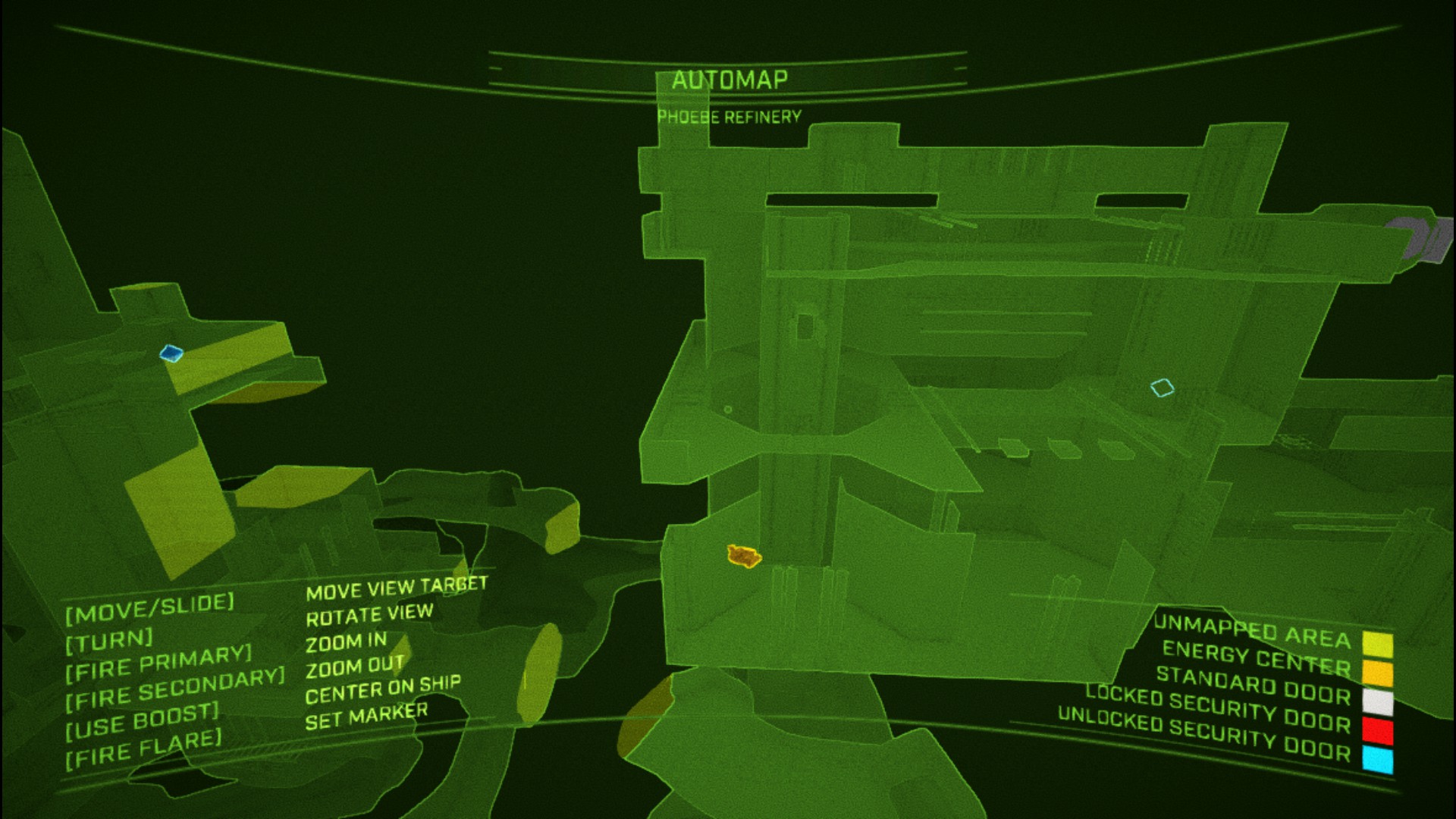
Story
I can’t say the story is that interesting in OL, primarily because of how it’s delivered. Although it does include voice-overs, you listen to the voice acting while staring at neon green text on a black screen. There aren’t cutscenes or images of the people involved to give the events some context, as the only time you’ll see the visage of a person is when rescuing people in stasis. Even then it’s nothing more than a photo ID. A story is nothing without characters, and the events taking place come across like some paranoid businessman getting ticked off because others won’t support his research since it’s not profitable.
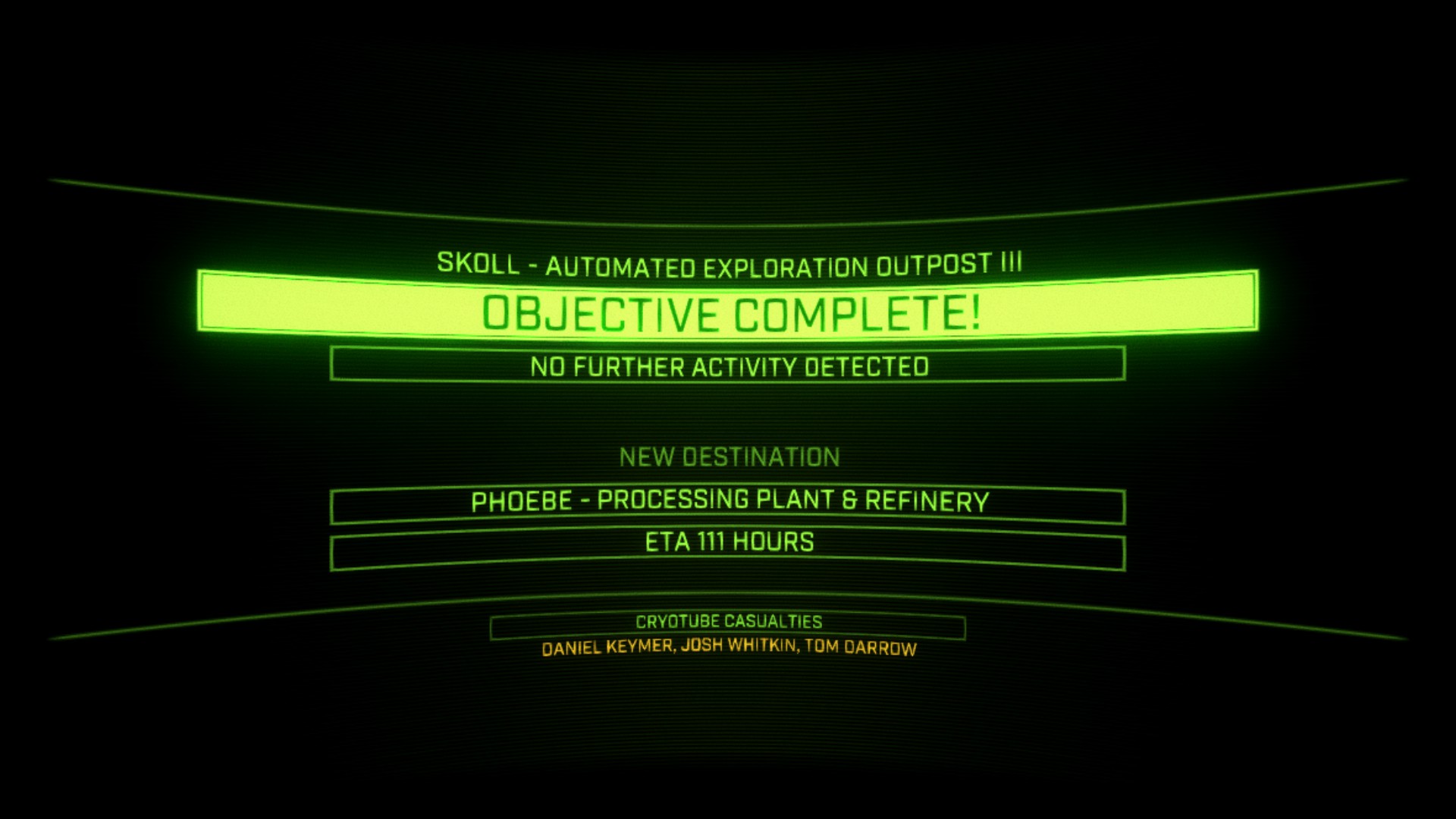
Graphics
The locations you fly your ship through exclusively consist of research facilities set in outer space, and excavated tunnels, which doesn’t make for the most exciting or diverse environment. For all intents and purposes, visually it could all be taking place on Earth. In spite of the sterile location, the graphics still look smooth and crisp, with your flight through the air feeling fluid due to how well the game handles 3D space. Kind of like the environment, enemy ships and the projectiles fired aren’t that distinct, but that wasn’t what drew my attention to OL in the first place. With my original concerns about the visuals, I’m glad that my orientation in the environment didn’t feel obtuse or hard to discern.
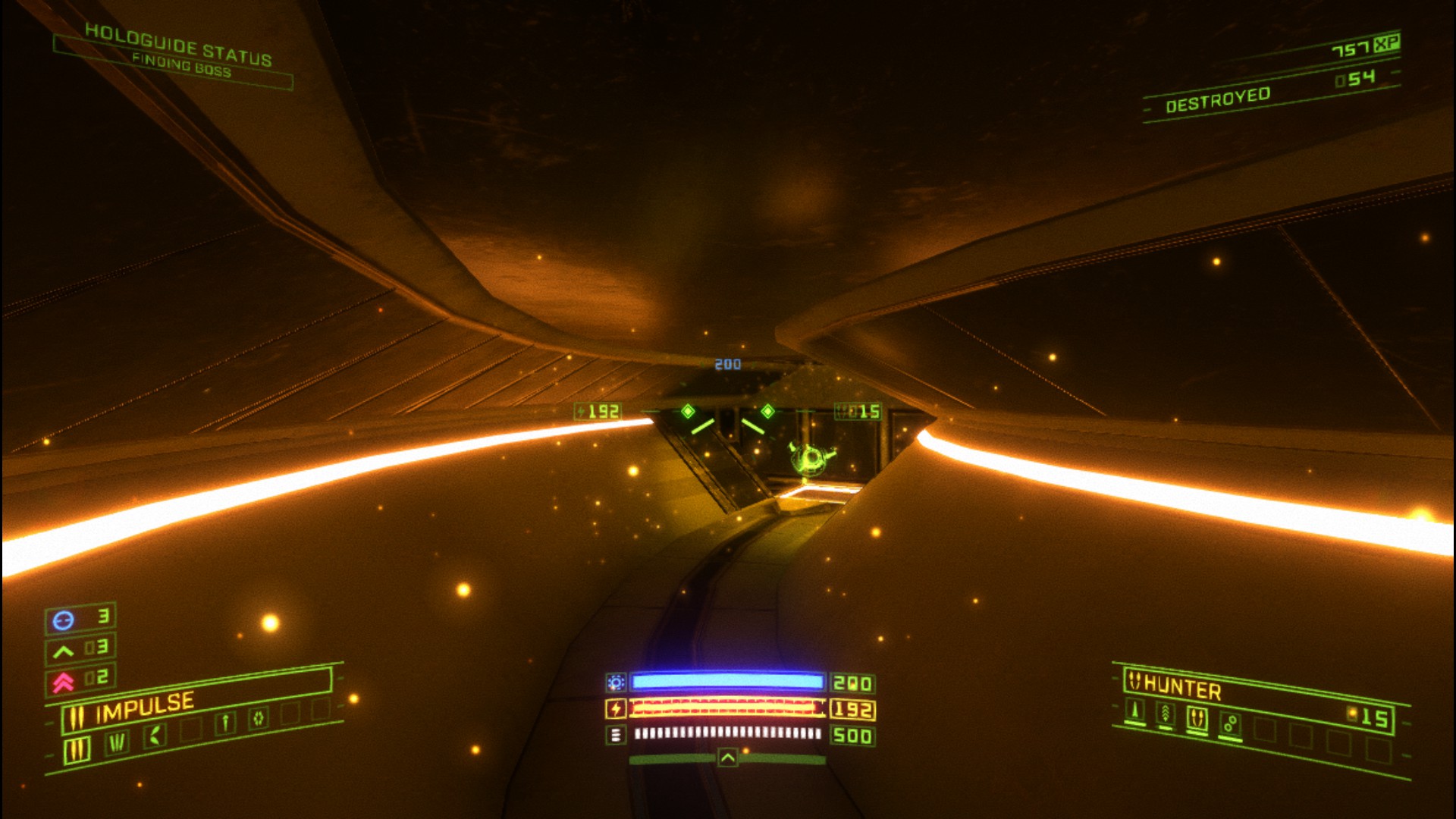
Sound Design
I wouldn’t say the music strikes me as spacey, even though the synthetic sounds may have tried to impart that effect, as this potential effect is taken over by the consistent style of grungy rock. Some songs slow the tempo down so it’s not as aggressive, but I could see all of these songs fitting together on the same CD. It fits the game well enough, though I don’t find it to be memorable music either. I didn’t mind the voice acting, as infrequent as it might be. Similarly, the sound effects of missiles blowing enemies up, and the other weaponry sounded as I’d expect from a game.
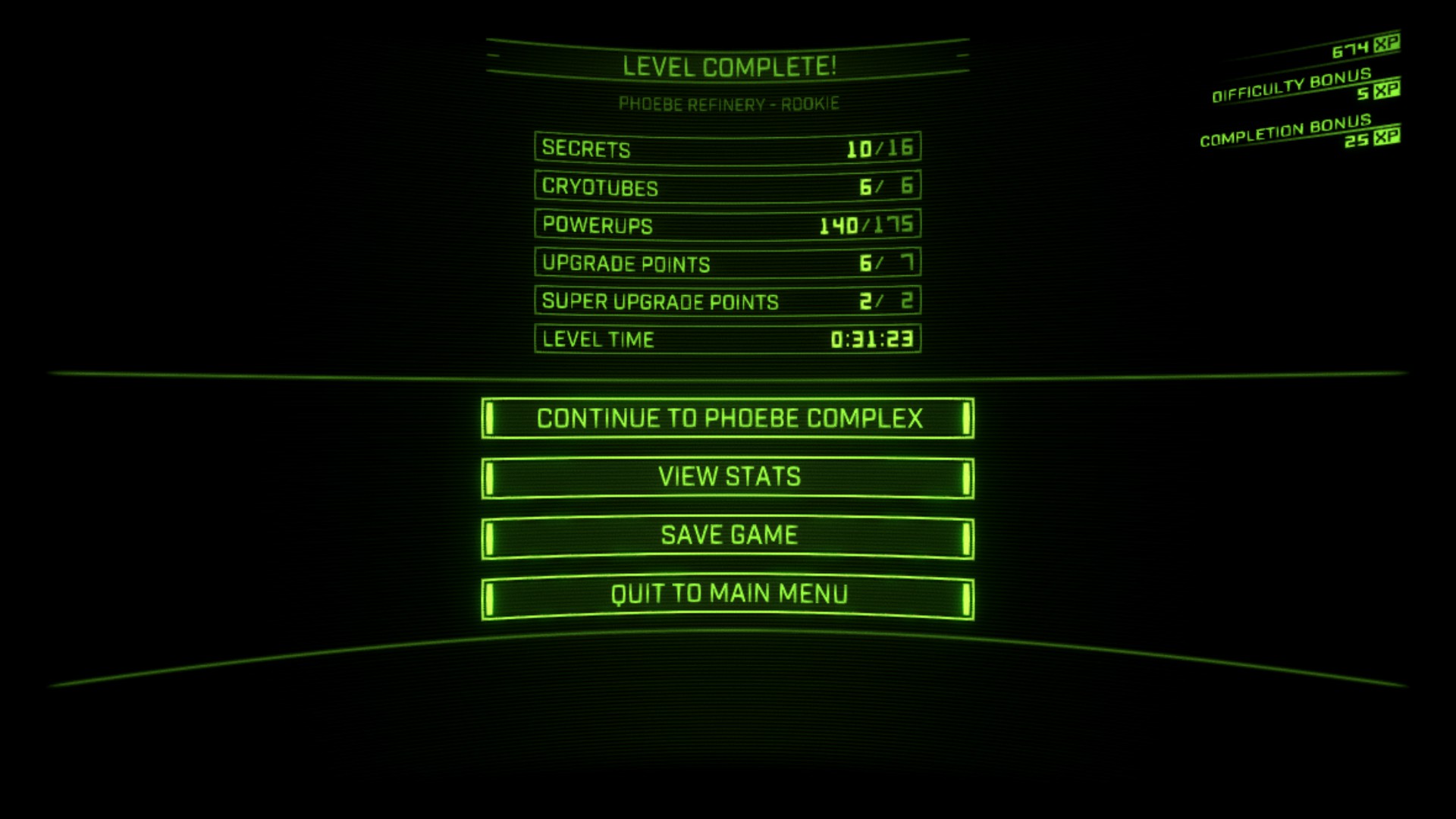
Pros
- As you become more comfortable with the controls and how the game plays, flying the spaceship feels natural and smooth. Just moving around is somewhat enjoyable, as odd as that might sound.
- I didn’t notice a lot of difference in the primary weapons, but I could see the distinction more clearly in the secondary ones. This variety helps address different enemy types and situations.
- If you like exploring, there’s plenty of secrets hidden in each stage. I doubt you’d find most of them without a guide though.
Cons
- The environments aren’t broad or open in any sense, you’re always flying through tight, compact locations. It somewhat defeats the point of flying a spaceship, because you have no freedom or room to take advantage of your range of flight.
- For whatever reason, I found myself playing the game a mission at a time, not really feeling like playing more of it right away.
- Enemies get bullet-spongey pretty quick, so you’ll almost have to spend upgrade points on your weapons.
Tips
- With the ammo and other pick-ups available in each stage, you’ll want to use your secondary weaponry evenly so that you don’t have a slot that still has full ammo and no need for that refill, but are completely empty on something else. Since your weaponry isn’t unlimited though, make your shots count.
- Enemies can be tucked away in dead-ends and around blind corners, so you can’t be too careful while going into unexplored areas. With how enemies suddenly show up, some won’t spawn until you trigger a spawn point.
- Explore the level by yourself for a while before turning on the guide. When I play levels without guidance the whole time, I tend to find more upgrades.
Final Thoughts
What I enjoyed most while playing OL was the sense of movement as I flew around, and even though some angles might disorient me, it always felt pretty smooth. However, the game itself didn’t give me as much satisfaction as I hoped for. The stage design worked against what these controls could have allowed for, putting you into a concise box with almost as little visual interest. With an emphasis on needing to explore for upgrades and secrets, which are sometimes tucked behind panels that don’t look like doors, it reminded me of Nintendo 64 games. I remember games from that era hiding power-ups in out of the way locations, and your time in any given stage increased significantly in spite of not accomplishing anything.
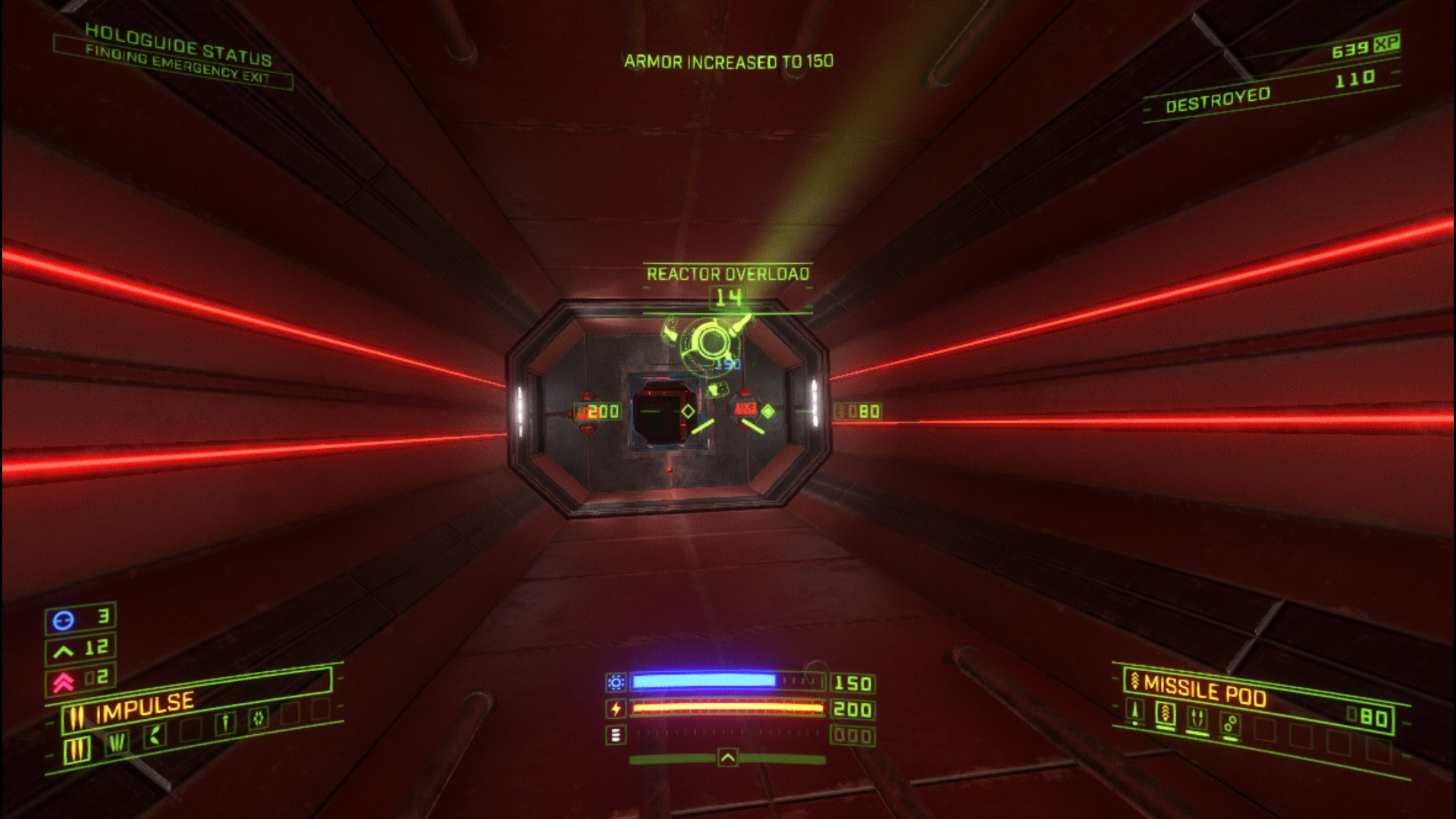
When shooting red buttons and unlocking doors, with no clear indication as to which secret door those buttons pertain to, I was frustrated by what felt like an unrefined era of game design. I think the reason why the game gets such good reviews is because it initially feels good. However, the achievements for getting very far into the game aren’t earned by many people, with only 15% of people beating the first 3 stages (not including the tutorial). My reference to Star Fox 64 wasn’t intentional to the point I made here, but it seems prophetic after I spent more time playing OL. I might recommend OL if I thought more people would even beat it, and since that seems unlikely, I’d suggest skipping it.
